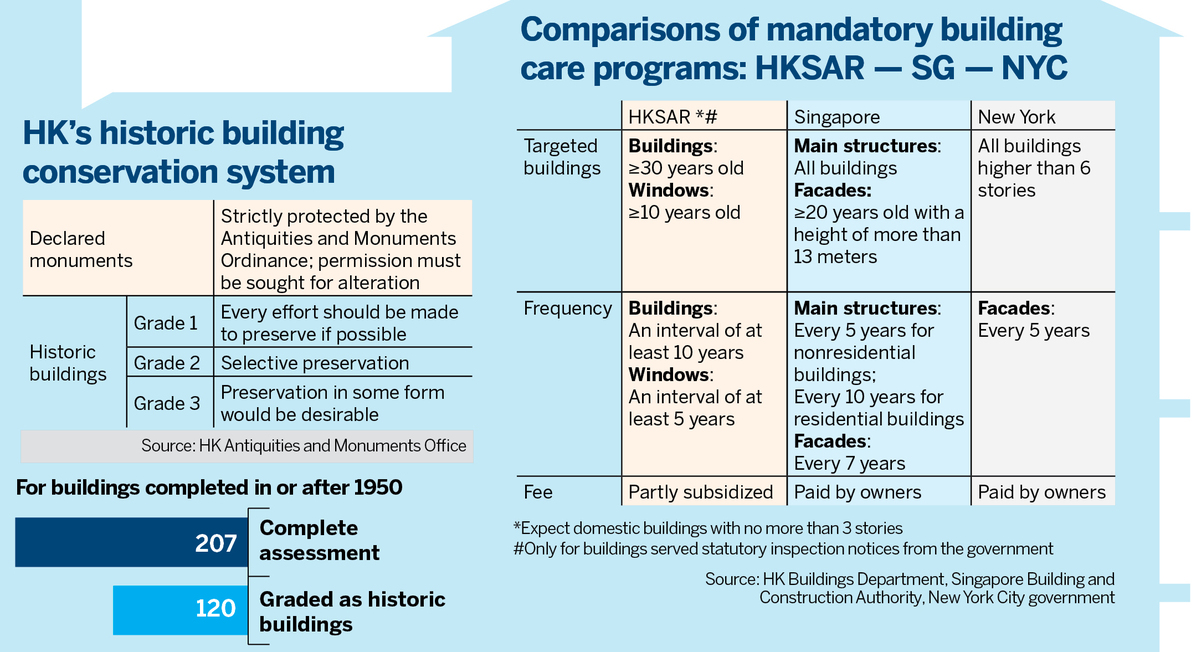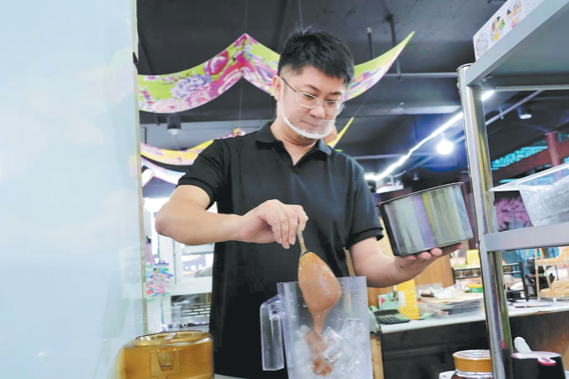How secure are buildings past 50 years old?


'Three-nil' dilemma
Private residential buildings which elect owners' committees, and those maintained by property management companies, regularly have their structural integrity inspected and common facilities repaired.
Government-owned and subsidized public housing, through the Housing Authority and the nongovernmental Hong Kong Housing Society, benefit from centralized management and scheduled inspections to ensure the physical integrity of structures and facilities such as water supply, refuse disposal and sanitation.
The category with the highest risk are residential buildings that do not have Owners' Corporations (OCs), residents' organizations nor property management companies, to inspect, maintain and repair them.
These are referred to as the "three-nil" buildings. In 2023, there were 3,000 such buildings in serious need of inspection and repair. The stock of three-nil buildings reduced from 6,600 in 2011 to 2,900 in 2022 but rebounded to 3,000 last year.
Since 2011, authorities have helped over 640 three-nil buildings establish or resume the operation of OCs — independent bodies on behalf of owners — to manage maintenance. That assumes that owners are able to afford large maintenance repairs.
Legislator Kitson Yang Wing-kit believes that some blocks have opted to dissolve their OCs due to an inability to carry out management and repairs, and has called on the government to fill the gap. Over the last three years, the government has repaired 144 three-nil buildings in immediate risk.
According to District Councilor Jimmy Lam Pok of Kowloon City, many owners are out of contact due to emigration or other reasons, forming obstacles to consensuses and fundraising. "In many cases, owners can only raise about 70 percent of the maintenance fee, so fewer contractors are willing to undertake work on these buildings," he said. Lam, from direct knowledge of the dire state of several buildings, called on the government to prioritize cases for urgent repair.
The URA, in collaboration with the Hong Kong Institute of Housing, is experimenting with a joint property management mode for three-nil buildings in Kowloon. The trial allows multiple single-block buildings to jointly hire one property management company, so that households in the buildings get basic management services such as regular inspection and notice boards at an affordable rate.
"We hope the Joint Property Management program will be a good opportunity to help residents be aware of their responsibility to manage their own properties," said HKIH Vice-President Rosita Wong Po-chun.
In July, lawmakers approved lowering compulsory sale application thresholds for old buildings. The URA plans to incorporate catalysts, such as transfer of plot ratio and sizable development areas, in redevelopment road maps for areas like Mong Kok and Yau Ma Tei.
These new mechanisms enhance land-use efficiency and optimize redevelopment potential to encourage private developer participation.
- Five people face charges over deadly school fire in Henan
- Mainland to help Taiwan businesses seize development opportunities: spokeswoman
- China creates over 12 million new urban jobs in the first 11 months
- PM2.5 drops to lowest level in Beijing in 1st 11 months of 2025
- Number of digital consumers in China tops 958 million
- China issues regulation to promote public reading





































